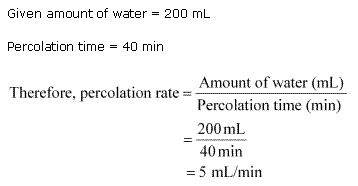Chapter 9, “Soil,” from the NCERT Science textbook for Class 7 Soil is a vital natural resource that supports plant life and is essential for agriculture. It is formed through the weathering of rocks and the decomposition of organic matter over long periods.
Formation of Soil:
- Weathering: The process by which rocks break down into smaller particles due to physical, chemical, or biological processes.
- Organic Matter: Decayed remains of plants and animals enrich the soil with nutrients.
Types of Soil:
- Sand Soil: Coarse particles, good drainage, poor water retention.
- Clay Soil: Fine particles, retains water, but drains poorly.
- Loamy Soil: A mixture of sand, silt, and clay, ideal for agriculture due to its balance of drainage and nutrient retention.
Soil Profile:
- The soil profile consists of layers:
- Topsoil (A horizon): Rich in organic material and nutrients.
- Subsoil (B horizon): Contains minerals leached from above.
- C horizon: Weathered rock material.
- Bedrock: The solid rock underlying the soil.
- The soil profile consists of layers:
Importance of Soil:
- Provides nutrients for plants.
- Supports structures and buildings.
- Helps in water filtration and retention.
Soil Erosion:
- The removal of the topsoil layer by wind, water, or human activity, which can lead to decreased fertility and productivity.
Conservation of Soil:
- Practices like afforestation, crop rotation, and terrace farming help in preventing soil erosion and maintaining soil health.
NCERT Solutions Science Chapter 9 Soil for 2024-2025
Tick the most suitable answer in questions 1 and 2.
1. In addition to the rock particles, the soil contains
(i) air and water
(ii) water and plants
(iii) minerals, organic matter, air and water
(iv) water, air and plants
Solution:
The answer is (iii) minerals, organic matter, air and water.
2. The water holding capacity is the highest in
(i) sandy soil
(ii) clayey soil
(iii) loamy soil
(iv) mixture of sand and loam
Solution:
The answer is (ii) clayey soil
Explain how soil is formed.
Solution:
Soil is formed due to the weathering of rocks. Weathering is a process in which physical breakdown and chemical decomposition of minerals takes place primarily by wind, water and climatic changes. In the weathering process, rocks are converted to small pieces, which eventually turn to soil particles to form a layer of soil.
5. How is clayey soil useful for crops?
Solution:
Clayey soil is useful for crops for the following reasons
- It has excellent water holding capacity
- Clayey soil is rich in organic matter
- Clayey and loamy soils are suitable for growing cereals like wheat
- Water holding-capacity of clayey soil supports the growth of crops like paddy which require more water to grow
6. List the differences between clayey soil and sandy soil.
Solution:
| Clayey Soil | Sandy Soil |
| 1. Particles are finer | Particles are larger |
| 2 Particles are tightly packed | Particles are loosely packed |
| 3. Holds a good amount of water | Water holding capacity is low |
| 4. It is heavy in weight | It is light in weight |
| 5. Rich in humus and organic nutrients | Not rich in humus and organic nutrients |
| 6. Very little air is trapped between the particles | More air is trapped between the particles |
7. Sketch the cross-section of soil and label the various layers.
Solution:

Explain how soil is formed.
Solution:
Soil is formed due to the weathering of rocks. Weathering is a process in which physical breakdown and chemical decomposition of minerals takes place primarily by wind, water and climatic changes. In the weathering process, rocks are converted to small pieces, which eventually turn to soil particles to form a layer of soil.
5. How is clayey soil useful for crops?
Solution:
Clayey soil is useful for crops for the following reasons
- It has excellent water holding capacity
- Clayey soil is rich in organic matter
- Clayey and loamy soils are suitable for growing cereals like wheat
- Water holding-capacity of clayey soil supports the growth of crops like paddy which require more water to grow
6. List the differences between clayey soil and sandy soil.
Solution:
| Clayey Soil | Sandy Soil |
| 1. Particles are finer | Particles are larger |
| 2 Particles are tightly packed | Particles are loosely packed |
| 3. Holds a good amount of water | Water holding capacity is low |
| 4. It is heavy in weight | It is light in weight |
| 5. Rich in humus and organic nutrients | Not rich in humus and organic nutrients |
| 6. Very little air is trapped between the particles | More air is trapped between the particles |
7. Sketch the cross-section of soil and label the various layers.
Solution:

9. Explain how soil pollution and soil erosion could be prevented
Solution:
Soil pollution can be controlled by the following measures:
- By reducing the use of plastics, we can reduce soil pollution.
- By controlling the use of chemical fertilisers and pesticides, we can control soil pollution.
Soil erosion can be controlled by taking the following steps
- Planting more and more trees will result in the reduction of soil erosion.
- By stopping deforestation and avoiding overgrazing of animals.
